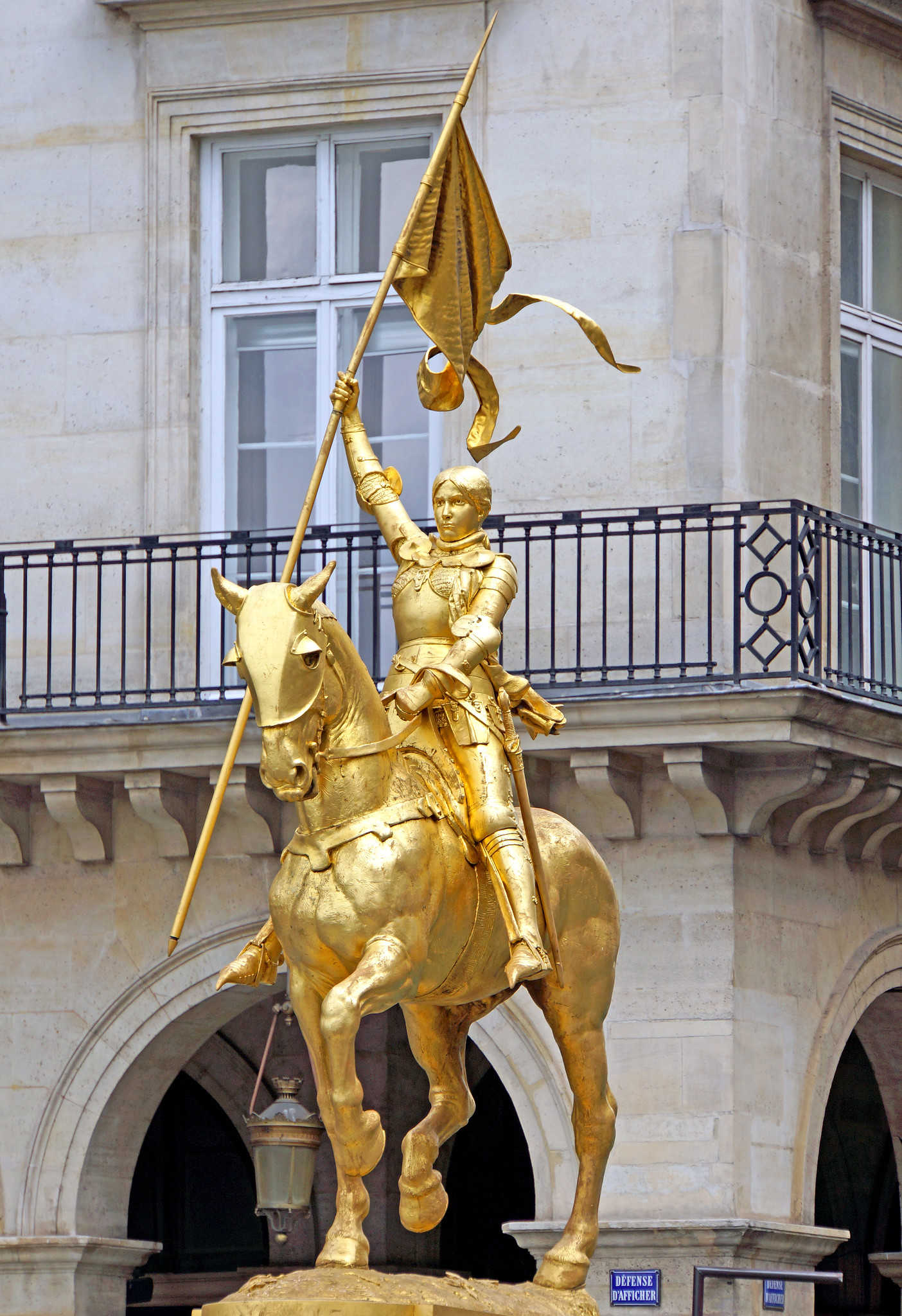



The trial and retrial of Joan of Arc
On January 9, 1431, in Rouen, the first trial of Joan of Arc began, overseen by the bishop of Beauvais, Pierre de Cauchon, ally to the English whom she had helped defeat on the Hundred Years' War. It was a long and very well-documented process, and it lead to Joan's conviction for heresy on May 29. Formally, the technical reason that justified her execution was the fact that she insisted to wear men's clothing. The following day, May 30, at age 19, she was burned alive at the stake.
On November 7, 1455, a rehabilitation trial began in Notre Dame Cathedral — 24 years after her death, and only after the French had recaptured the city of Rouen and thus gained access to all of the original trial's documents. On July 7, 1456, Joan of Arc was finally declared innocent and a martyr. In 1920, she would be canonized by the Catholic Church.

Statue of Joan of Arc in France. Photograph by Dennis Jarvis, linked below.
How Cross-Dressing Helped Send Joan of Arc to the Stake
"...After threats of torture and rounds of cross examination, Joan signed a document denying her visions and agreeing not to wear men's clothes. She was sentenced to life imprisonment, but avoided execution. However, within a few days, possibly after some unwanted male advances from prison guards, but more likely because she didn't understand what she'd signed and hadn't been allowed to attend Mass even if she wore female clothes, she returned to the tunic and hose. At the same time, it was discovered that she was still hearing voices. Frustrated by her relapse into heresy — both because she continued to wear men's clothes and continued to claim hearing voices of saints — the pro-English Bishop of Beauvais, Pierre Cauchon, decided to excommunicate and then execute her, partly for the heresy of wearing men's clothes.
The charge was defying the Biblical verse Deuteronomy 22:5, which said that women should not wear "that which pertaineth unto a man." Cross-dressing was generally frowned upon by medieval church and state, but there's no record of it being prosecuted or leading directly to a death sentence. Even religious scholars agreed it was sometimes necessary: In Summa Theologica, the priest St. Thomas Aquinas wrote that women wearing mens clothes were sinful, but said it might be done sometimes "without sin on account of some necessity, either in order to hide oneself from enemies, or through lack of other clothes, or for some similar motive." — by Joan Vos Macdonald
Read the full article below:

Statue of Joan of Arc in Notre-Dame of Paris, France, by Carlos Delgado.
Joan of Arc
Joan of Arc, in French Jeanne d'Arc or Jehanne (c. 1412 – 30 May 1431), nicknamed "The Maid of Orléans" (French: La Pucelle d'Orléans), is considered a heroine of France for her role during the Lancastrian phase of the Hundred Years' War, and was canonized as a Roman Catholic saint. She was born to Jacques d'Arc and Isabelle Romée, a peasant family, at Domrémy in north-east France. Joan claimed to have received visions of the Archangel Michael, Saint Margaret, and Saint Catherine of Alexandria instructing her to support Charles VII and recover France from English domination late in the Hundred Years' War. The uncrowned King Charles VII sent Joan to the siege of Orléans as part of a relief army. She gained prominence after the siege was lifted only nine days later. Several additional swift victories led to Charles VII's coronation at Reims. This long-awaited event boosted French morale and paved the way for the final French victory.
On 23 May 1430, she was captured at Compiègne by the Burgundian faction, a group of French nobles allied with the English. She was later handed over to the English and put on trial by the pro-English bishop Pierre Cauchon on a variety of charges. After Cauchon declared her guilty she was burned at the stake on 30 May 1431, dying at about nineteen years of age. — Wikipedia

On April 15, 2019, a fire struck the cathedral of Notre-Dame de Paris. This timespace guides you through the history and possible future of this Parisian landmark.